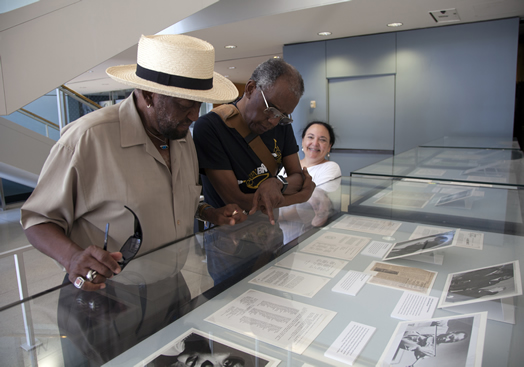Allegro
‘The men with satin voices’
Reminiscences
Volume 115, No. 3March, 2015
There are moments in your life that change you forever, but you don’t know it at the time. When you look back, they are like fence poles in the soil connected by horizontal boards, which form the line of your biography. Such a moment came when I sent the trumpeter Wilmer Wise a message via Facebook several years ago. “Hi, I think you knew me when I was 9,” I told him. “I don’t know if you remember, but…”
What? Of course he remembered me. Wilmer had performed in the Symphony of the New World, which my father helped establish. It was the first fully-integrated professional symphony orchestra in the U.S.
But all of us had scattered. Now, after 37 years in the wilderness, Wilmer brought me home to the people who loved my father, including the flutist Harold Jones, whose voice was like satin.
As an afternoon settled into twilight five years ago, my honor in speaking to him turned into a gentle conversation between a pioneer and his friend’s daughter. “I’m 52 now,” I told him.
“Time passes quickly,” he said.

Harold Jones, Wilmer Wise and Barbara Steinberg at the Lincoln Center branch of the New York Public Library in 2014. The library presented an exhibit of the Symphony of the New World, the first fully-integrated professional symphony orchestra in the U.S., where both Mr. Jones and Mr. Wise had performed. Please see our obituaries for Mr. Jones and Mr. Wise in this issue.
On May 6, 1965, the Symphony of the New World stood up on the stage of Carnegie Hall with 36 black and 52 white musicians, including Harold Jones and Wilmer Wise. Earlier that year, Martin Luther King had led the 54-mile march from Selma to Montgomery. And by the end of that year, President Lyndon Johnson would sign the Voting Rights Act.
On a brilliant day in May, 49 years later, the Symphony of the New World finally made it to the New York Public Library. I arranged a lunch. All the participants wanted the story to become a documentary film. Wilmer, Harold, Joe Wilder’s biographer Ed Berger and I joined two of my high-school friends to see if we could make it happen. I stood at Lincoln Center’s fountain waiting for everyone to arrive. I would see Harold and Wilmer for the first time as an adult. What would they look like?
Up walked this elegant man in a tan shirt and straw hat, which he wore with aplomb. Wilmer wore jeans. There was a silent, thrilled recognition when we saw each other.
At the exhibition, and at lunch, Wilmer’s and Harold’s memories were encyclopedic. The wit that passed between them was a decades-old friendship having fun again. Harold loved jewelry. “The bead on this necklace comes from Ghana,” he said enthusiastically. Wilmer’s eyes rolled the entire circumference of the Earth.
Everything clicked. We were excited about making the film. My friend was going to write to a well-known filmmaker. Everyone was elated, but time passes quickly. The filmmaker was too busy. Then God worked in a mysterious way. By chance, I met Terrance McKnight, a radio host at WQXR and scholar, who knew more about the Schomburg’s Symphony of the New World collection than anyone else. He wanted this project badly. “This is my life, too,” he said. I introduced him to Harold and Wilmer, who knew the racism in classical music wasn’t over.
“There are still problems for blacks. It’s even harder. You have to play very well, but because you’re black you cannot get the job. You see the racism, but there’s not much you can do about it except give them a little suggestion,” said Harold.
Terrance would talk to him all the time. “Any time I had a question, I called Harold. He was my sounding board. He was fine.”
I talked to Wilmer too. On Wednesday, Jan. 28, we had a lovely conversation. The support on his Facebook friends list gave him never-ending joy. “I’ll speak to you again at the end of the week.” His voice was like satin.
On Monday, Jan. 12, 2015, Harold Jones died of a brain tumor. Two weeks later, on Friday, Jan. 30, 2015, Wilmer’s long struggle with cancer ended.
Time passes too quickly.
Barbara Steinberg is the daughter of the late conductor Benjamin Steinberg, founding artistic director of the Symphony of the New World. Her story about the Symphony of the New World was published in the February 2014 issue of Allegro.
